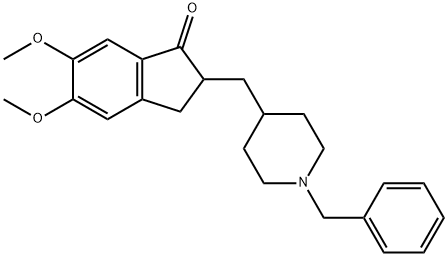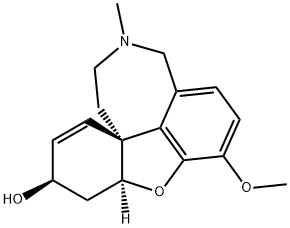Galanthamine hydrobromide
Synonym(s):Galanthamine, Hydrobromide - CAS 69353-21-5 - Calbiochem;Nivalin, HBr
- CAS NO.:69353-21-5
- Empirical Formula: C17H22BrNO3
- Molecular Weight: 368.27
- MDL number: MFCD00067672
- EINECS: 217-780-5
- SAFETY DATA SHEET (SDS)
- Update Date: 2025-01-27 09:38:02

What is Galanthamine hydrobromide?
General Description
A competitive and reversible inhibitor of acetylcholinesterase. Antimyasthenic agent. Can partially reverse the effects of scopolamine-induced amnesia in rats. Reported to improve learning and short-term memory in animal models.
Biochem/physiol Actions
Primary TargetAcetylcholinesterase
Clinical Use
Galantamine, which was introduced in 2001, is an alkaloid found in plants of the family Amaryllidaceae, which includes the daffodil (Narcissus pseudonarcissus) and snowflake (Leucojum aestivum). It is a reversible inhibitor of AChE, but it does not appear to inhibit butyrylcholinesterase. Because it is a tertiary amine and can cross the blood-brain barrier, it is indicated for treatment of mild-to-moderate AD and dementia. It has been used outside the U.S. for more than 30 years as an anticurare agent in anesthesia. Galantamine differs from other cholinesterase inhibitors, because it allosterically binds to nicotinic receptors, giving it a dual cholinergic action.
Metabolism
It is metabolized (75%) by CYP2D6 and CYP3A4 to afford the normethyl, O-desmethyl, and O-desmethylnormethyl metabolites, along with some other minor metabolites. Unlike tacrine, galantamine is not associated with hepatotoxicity. Its elimination half-life is 5.7 hours.
Properties of Galanthamine hydrobromide
| storage temp. | Sealed in dry,Room Temperature |
| form | White solid |
Safety information for Galanthamine hydrobromide
| Signal word | Danger |
| Pictogram(s) |
 Skull and Crossbones Acute Toxicity GHS06 |
| GHS Hazard Statements |
H301:Acute toxicity,oral |
| Precautionary Statement Codes |
P264:Wash hands thoroughly after handling. P264:Wash skin thouroughly after handling. P270:Do not eat, drink or smoke when using this product. P301+P310:IF SWALLOWED: Immediately call a POISON CENTER or doctor/physician. P405:Store locked up. P501:Dispose of contents/container to..… |
Computed Descriptors for Galanthamine hydrobromide
New Products
1-Boc-4-cyanopiperidine tert-Butyl carbazate 1-(TERT-BUTOXYCARBONYL)-2-PYRROLIDINONE TETRABUTYLAMMONIUM CYANIDE TETRAHYDRO-2H-PYRAN-3-OL 3-Pyridineacrylic acid Nickel(II) perchlorate hexahydrate, 98% 4-Bromophenylacetonitrile, 95% 3-Bromo-4-fluoroaniline, 97% Sodium tetraborate decahydrate, 98% Palladium(II) acetate, trimer, Pd 99% 4-Bromo-2-chlorotoluene, 97% Tadalafil Clopidogrel bisulfate Sitagliptin Phosphate Monohydrate Cabergoline Fexofinadine HCl Etoricoxib 4-Amino Acetophenone 2-Chloro Acetophenone Amlodipine Base 2,3,5-Triiodobenzoic Acid Pyrrolidine Diiodo PentoxideRelated products of tetrahydrofuran
You may like
-
 Galanthamine, Hydrobromide CAS 69353-21-5View Details
Galanthamine, Hydrobromide CAS 69353-21-5View Details
69353-21-5 -
 366789-02-8 Riveroxaban 98%View Details
366789-02-8 Riveroxaban 98%View Details
366789-02-8 -
 Phenylephrine HCl 61-76-7 98%View Details
Phenylephrine HCl 61-76-7 98%View Details
61-76-7 -
 Carvedilol 98%View Details
Carvedilol 98%View Details
72956-09-3 -
 Abiretorone 154229-18-2 98%View Details
Abiretorone 154229-18-2 98%View Details
154229-18-2 -
 73590-58-6 Omeprazole 98%View Details
73590-58-6 Omeprazole 98%View Details
73590-58-6 -
 201530-41-8 Deferasirox 98%View Details
201530-41-8 Deferasirox 98%View Details
201530-41-8 -
 Sertraline HCl 98%View Details
Sertraline HCl 98%View Details
79559-97-0





